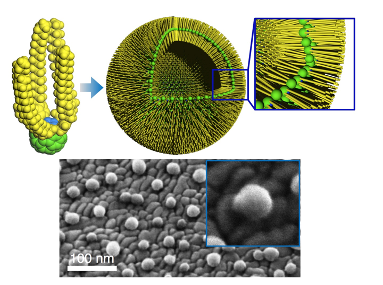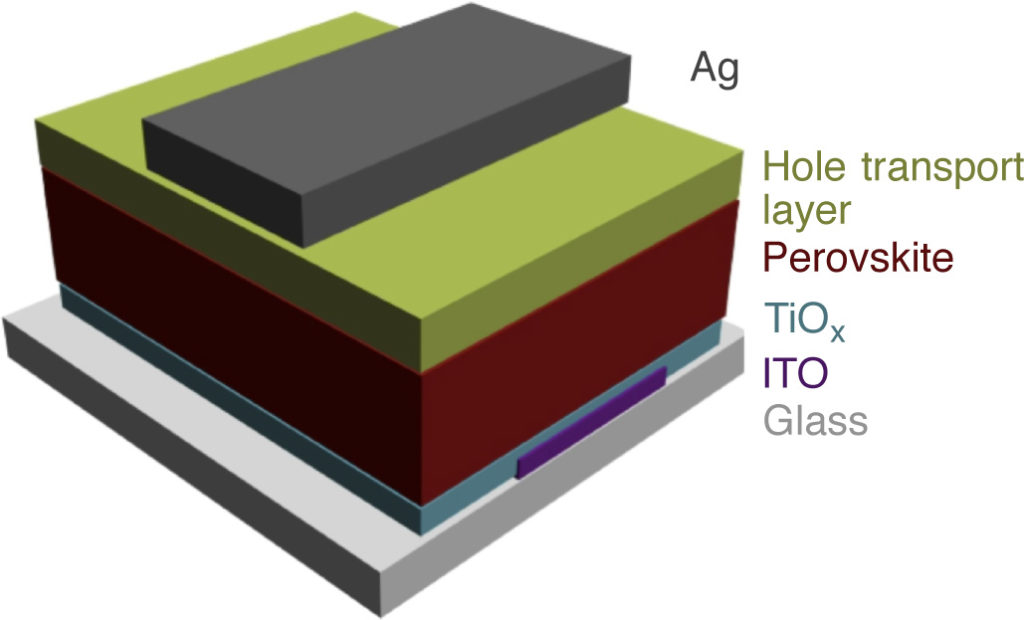New reactions, new materials, and new principles explored by organic chemistry

It has long been the dream of chemists to elucidate the intrinsic nature of atoms, molecules, and their assemblies, together with controlling their functions. We are exploring new concepts of structural chemistry and the creation of new functional materials using original synthetic tools developed by ourselves. We are also promoting research into the creation, property control, and biological function of molecular assemblies at angstrom or nanoscale level, and even above (nano-integration). This research is based on fundamental investigations into the structure and reactivity of organic molecules, using various tools such as high-resolution electron microscopy, scanning probe microscopy, and theoretical calculations, together with the development of powerful synthetic methods. These studies are supported by research grants from the Ministry of Education, Culture, Sports, Science and Technology, with the ultimate goal to reach for scientific dreams, to sustain healthy life, and to address environmental issue and resources depletion.
Video of our research activity
Sonata for Carbon Cluster (2010)
「Micrographia 350」at University of Oxford (2015)
プレスリリース「動く分子の世界最高速での動画撮影」(2020年)
UTokyo FOCUS video newsletter (2020)
Research Projects
A scientists’ dream: “Imaging single organic molecules in motion” is becoming reality
It has been the dream of scientists to observe the motion of single small organic molecules, ever since the concept of atoms and molecules was established a long time ago. We showed in a 2007 Science paper that this is no longer a dream, by studying using a high-resolution electron microscope to in situ record movies the motions of small organic molecules trapped in carbon nanotubes (Reference 1). Figure 1a shows images of a saturated hydrocarbon molecule tagged with a ball-shaped boron marker in motion. Since then we reported movies of the conformational changes of a number of small molecules (Reference 2), and even performed kinetic analysis of chemical reactions by analysis individual reaction events one by one (Reference 3). We could also study for the aggregation of single organic molecules leading to nucleation and crystal growth (Reference 4). Once considered too futuristic, this research is seeing rapid development owing to a state-of-the-art atomic resolution electron microscope (Fig. 1b) in full operation on the basement of the Molecular Life Innovation (MLI) building where our lab located.

Related Articles
Real-time Video Imaging of Mechanical Motions of a Single Molecular Shuttle with Sub-millisecond Sub-angstrom Precision
T. Shimizu, D. Lungerich, J. Stuckner, M. Murayama, K. Harano, E. Nakamura, Bull. Chem. Soc. Jpn.,93, 1079-1085 (2020).
Atomistic Structures and Dynamics of Prenucleation Clusters in MOF-2 and MOF-5 Syntheses
J. Xing, L. Schweighauser, S. Okada, K. Harano, E. Nakamura, Nat. Commun., 10, 3608 (2019).
Atomic-Resolution Transmission Electron Microscopic Movies for Study of Organic Molecules, Assemblies, and Reactions: The First 10 Years of Development
E. Nakamura, Acc. Chem. Res., 50, 1281–1292 (2017).
Direct Microscopic Analysis of Individual C60 Dimerization Events: Kinetics and Mechanisms
S. Okada, S. Kowashi, L. Schweighauser, K. Yamanouchi, K. Harano, E. Nakamura, J. Am. Chem. Soc., 139, 18281-18287 (2017).
Imaging Single Molecules in Motion
M. Koshino, T. Tanaka, N. Solin, K. Suenaga, H. Isobe, and E. Nakamura, Science, 316, 853 (2007)
Science of Functional Carbon Clusters
π-Conjugated organic compounds possess unique electronic properties, and assemble to form functional materials. We have developed new carbon-rich π-conjugated materials (functional carbon clusters) and investigated their materials and biological applications. For example, when nanometer-sized [60]fullerene molecules are functionalized and aligned horizontally, water-tight fullerene bilayer membranes form and assemble into nanoscale vesicles (Reference 5, Figure 2). We also achieved DNA and siRNA delivery to animals using an aminofullerene carrier. In addition to these curved π-electron compounds, we have developed a rigid planar π-electron system, carbon-bridged oligo(p-phenylenevinylene)s (COPVs), which serves as a molecular wire that transfers electrons very fast. A series of COPV compounds are also applicable to thin film organic lasers with long operational lifetimes and wavelength tunability.

Related Articles
Interfacial Chemistry of Conical Fullerene Amphiphiles in Water
K. Harano, E. Nakamura, Acc. Chem. Res., 52, 2090−2100 (2019).
Neutron Scattering Reveals Water Confined in a Watertight Bilayer Vesicle
W. Abuillan, A. S. Becker, B. Demé, T. Homma, H. Isobe, K. Harano, E. Nakamura, M. Tanaka, J. Am. Chem. Soc., 140, 11261–11266 (2018).
In Vivo Gene Delivery by Cationic Tetraamino Fullerene
R. Maeda-Mamiya, E. Noiri, H. Isobe, W. Nakanishi, K. Okamoto, K. Doi, T. Sugaya, T. Izumi, T. Homma, E. Nakamura, Proc. Natl. Acad. Sci. USA, 107, 5339-5344 (2010).
Synthesis, Structure and Aromaticity of a Hoop-shaped Cyclic Benzenoid [10]Cyclophenacene
E. Nakamura, K. Tahara, Y. Matsuo, and M. Sawamura, J. Am. Chem. Soc., 125, 2834-2835 (2003).
Hybrid of Ferrocene and Fullerene
M. Sawamura, Y. Kuninobu, M. Toganoh, Y. Matsuo, M. Yamanaka, and E. Nakamura, J. Am. Chem. Soc., 124, 9354-9355 (2002).
Stacking of Conical Molecules with a Fullerene Apex into Polar Columns in Crystals and Liquid Crystals
M. Sawamura, K. Kawai, Y. Matsuo, K. Kanie, T. Kato, and E. Nakamura, Nature, 419, 702-705 (2002).
Spherical Bilayer Vesicles of Fullerene Based Surfactants in Water: A Laser Light Scattering Study
S. Zhou, C. Burger, B. Chu, M. Sawamura, N. Nagahama, M. Toganoh, U. E. Hackler, H. Isobe, and E. Nakamura, Science, 291, 1944-1947 (2001).
Exploring and Practical Application of New Principles of Organic Thin Film Solar Cells: Contribution to Solving Energy Problems
The development of a new type of organic thin-film solar cell was achieved by using the above group of “activated carbon cluster”. The commercialization of these products has progressed through technology transfer to companies. Aiming for the next generation solar cells with higher efficiency, we are engaged in basic research on electron transfer at the material interface, elucidation of the chemical principle of organic/inorganic hybrid solar cells, and improvement of their performance. We have also succeeded in synthesizing new π-conjugated molecules with extremely high planarity, and are developing solid-state lasers and monomolecular devices with new structures and operation principles.


Related Articles
B/N-Doped p-Arylenevinylene Chromophores: Synthesis, Properties, and Microcrystal Electron Crystallographic Study
H. Lu, T. Nakamuro, K. Yamashita, H. Yanagisawa, O. Nureki, M. Kikkawa, H. Gao, J. Tian, R. Shang, E. Nakamura, J. Am. Chem. Soc., 142, 18990–18996 (2020).
Spiro-conjugated Carbon/Heteroatom-bridged p-Phenylenevinylenes: Synthesis, Properties, and Microcrystal Electron Crystallographic Analysis of Racemic Solid Solutions
H. Hamada, T. Nakamuro, K. Yamashita, H. Yanagisawa, O. Nureki, M. Kikkawa, K. Harano, R. Shang, E. Nakamura, Bull. Chem. Soc. Jpn., 93, 776–782 (2020).
Axially Chiral Spiro-conjugated Carbon-bridged p-Phenylenevinylene Congeners: Synthetic Design and Materials Properties
H. Hamada, Y. Itabashi, R. Shang, E. Nakamura, J. Am. Chem. Soc., 142, 2059–2067 (2020).
Disodium Benzodipyrrole Sulfonate as Neutral Hole-Transporting Materials for Perovskite Solar Cells
R. Shang, Z. Zhou, H. Nishioka, H. Halim, S. Furukawa, I. Takei, N. Ninomiya, E. Nakamura, J. Am. Chem. Soc., 140, 5018-5022 (2018).
Citric Acid Modulated Growth of Oriented Lead Perovskite Crystals for Efficient Solar Cells
Y. Guo, W. Sato, K. Shoyama, H. Halim, Y. Itabashi, R. Shang, E. Nakamura, J. Am. Chem. Soc., 139, 9598-9604 (2017).
New Functionalized Organometallics and Their Application to Materials Science
Development of versatile reactive species is a fundamental subject in synthetic organic chemistry. We have been exploring new reactive species with particular focus on carbanion chemistry, and thus far devised novel carbanion species including naked ammonium enolate and metal homoenolates. More recently, we have embarked on a program of “Element Strategy”, where we aim to replace precious and toxic metal catalysts with base metal catalysts such as iron or cobalt. We place a particular focus on the development of step-efficient reactions such as C-H bond functionalization.
Furthermore, we have devised new methods for the preparation of benzofuran and indole derivatives through intramolecular addition of zinc alkoxide/amide to alkynes. The 3-zinciobenzofuran/indole species opened up routes to novel polysubstituted benzoheterole derivatives that will find applications to molecular electronics.


Related Articles
Chromium(III)-catalyzed C(sp2)–H Alkynylation, Allylation, and Naphthalenation of Secondary Amides with Trimethylaluminum as Base
M. Chen, T. Doba, T. Sato, H. Razumkov, L. Ilies, R. Shang, E. Nakamura, J. Am. Chem. Soc., 142, 4883–4891 (2020).
Homocoupling-free Iron-catalysed Twofold C–H Activation/Cross-couplings of Aromatics via Transient Connection of Reactants
T. Doba, T. Matsubara, L. Ilies, R. Shang, E. Nakamura, Nat. Catal. 2, 400-406 (2019).
Synthesis of Esomeprazole and Related Proton Pump Inhibitors through Iron-Catalyzed Enantioselective Sulfoxidation
S. Nishiguchi, T. Izumi, T. Kouno, J. Sukegawa, L. Ilies, E. Nakamura, ACS Catal., 8, 9738–9743 (2018).
Iron-Catalyzed C-H Bond Activation
R. Shang, L. Ilies, E. Nakamura, Chem. Rev., 117, 9086–9139 (2017).
Iron-catalyzed ortho C-H Methylation of Aromatics Bearing a Simple Carbonyl Group with Methylaluminum and Tridentate Phosphine Ligand
R. Shang, L. Ilies, E. Nakamura, J. Am. Chem. Soc., 138, 10132-10135 (2016).
Iron-Catalyzed Directed C(sp2)-H and C(sp3)-H Functionalization with Trimethylaluminum
R. Shang, L. Ilies, E. Nakamura, J. Am. Chem. Soc., 137, 7660-7663 (2015).
About “Molecular Technology Innovation” Chair Laboratory
Our laboratory is a department-wide chair laboratory organized by donations from Towa Pharmaceutical Co., Ltd., JEOL Ltd., Mitsubishi Chemical Corporation, The KAITEKI Institute Inc., and Sumitomo Chemical Co., Ltd. Through the research mentioned above, we will innovate molecular technologies and establish ways to reduce the energy consumption of resources, effectively use sunlight and ubiquitous elements, and create medical innovation. In addition, we will train young international researchers capable to practice molecular technology innovation for life and energy.
